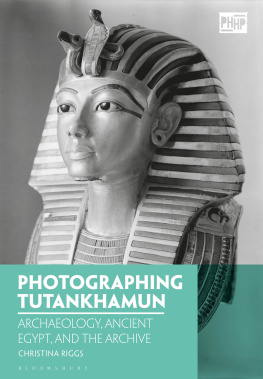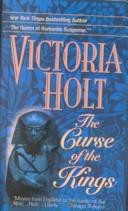To the memory of John Beynon (otherwise known as Grandall), a true gentleman in every sense of the word, and to Chris Simmons for piquing my interest in the macabre.
I have never heard such dreadful, horrible, blasphemous and abominable stuff as that which has been produced by this man who describes himself as the greatest living poet.
Mr Justice Rigby Swift on Aleister Crowley
An insatiable sexual athlete, a pimp who lived on the immoral earnings of his girlfriends, and a junkie who daily took enough heroin to kill a roomful of people.
Francis King on Aleister Crowley
The parallel with Macbeth inevitably forces itself upon the mind. Here was a man of action and endurance, a man capable of climbing Himalayan mountains and trekking in the scorching desert; but also a man eaten up by ambition; impatient, envious of any praise or reward that may have gone to the next (if lesser) man; and, withal, a poet. Like Macbeth, Crowley turned to the secret, black and midnight hags when things did not go well for him. He was a poet, black magician, and impresario of the Ragged Ragtime Girls.
Guy Deghy and Keith Waterhouse on Aleister Crowley
He is a man about whom men quarrel. Intensely magnetic, he attracts people or repels them with equal violence. His personality seems to breed rumours. Everywhere they follow him.
Henry N. Hall on Aleister Crowley
In writing this book it has been my good fortune to have worked alongside the fine people of The History Press who have breathed life into the project. I am indebted to my publishers, Laura Perehinec and Jay Slater, for believing in this book and for championing it when it looked like a lost cause; to my trusted editors, Chrissy McMorris and Matt Keefe, for their keen eyes and encouragement; and to my proofreaders, Chris Paull and Nick Mann, for their enthusiasm and their candid and valuable input.
On a more personal note, I would like to thank my friends and family for not only putting up with my endless stream of tedious conversation, but for also being stalwarts and saviours; in particular my sister, Anna, and brother, Ali, who provided an unrivalled proofreading service and constant support. Furthermore, I would like to extend my heartfelt love and gratitude to my partner, Vicky, for enthusiastically reading everything I put in front of her, for her unwavering patience and bearing the brunt of my incessant, often sleep-deprived ramblings, and for prudently suggesting that faking my own death and attributing it to the Curse of the Pharaohs in order to drum up publicity wasnt in my best interest!
Mark Beynon
London
February 2011
Contents
Prologue
Prologue
Throughout the 1920s and 1930s the newspapers and print media referred to the pharaoh Tut-Ankh-Amen. For the purposes of consistency, I have seen fit to change these and use the modern and more familiar spelling of Tutankhamun in all references.
21 January 1907 Shortly after writing a report into the supposedly cursed mummy-board at the British Museum, Bertram Fletcher Robinson dies at his home at 44 Eaton Terrace, Belgravia. The official cause of his death was recorded as typhoid fever.
4 November 1922 The 30ft sloping passageway leading down to the tomb of Tutankhamun is discovered.
16 February 1923 Howard Carter opens the sealed doorway to the tomb of Tutankhamun. Raoul Loveday dies at the Abbey of Thelema in Cefal, Sicily.
5 April 1923 Lord Carnarvon dies at the Continental-Savoy Hotel in Cairo. Numerous other deaths attributed to the Curse of the Pharaohs soon follow.
10 July 1923 The curse appears in Londons West End for the first time when Ali Kamel Fahmy Bey, a wealthy Egyptian prince, is shot dead by his wife, Marie-Marguerite, at the Savoy Hotel.
23 September 1923 Colonel Aubrey Herbert, the half-brother of Lord Carnarvon, dies of blood poisoning at the Harold Fink Memorial Hospital, Park Lane, following a routine dental operation.
January 1924 The body of Said Enani, Ali Kamel Fahmy Beys personal secretary, is discovered in Paris. The official cause of death is listed as pneumonia.
15 November 1929 Captain Richard Bethell, private secretary to Howard Carter in Luxor and one of the first men to enter the tomb of King Tut, dies in suspicious circumstances at Mayfairs Bath Club.
20 February 1930 Lord Westbury, the father of Richard Bethell and a keen amateur Egyptologist, reportedly throws himself from his seventh-floor apartment at St James Court.
24 February 1930 Edgar Steele, a sign-writer at the British Museum in charge of handling the Ancient Egyptian artefacts, dies at St Thomas Hospital following an operation for internal trouble. On the same day, 8-year-old Joseph Greer is knocked down and killed by Lord Westburys hearse in Battersea as it is carrying him to the crematorium at Golders Green.
13 October 1930 Henry (Harry) Reginald Holland Hall, the Keeper of the Egyptian and Assyrian Antiquities at the British Museum, dies at his London home after catching pneumonia.
2 January 1934 Arthur Weigall, the respected English Egyptologist with extensive links to the British Museum and who reported on the opening of Tutankhamuns tomb in Luxor, dies at the London Hospital in Whitechapel.
23 November 1934 Sir Ernest Wallis Budge, the second Keeper of the Egyptian and Assyrian Antiquities at the British Museum to succumb to the supposed curse, who had spent over thirty years in his position at the museum, dies at his home at 48 Bloomsbury Street.
5 April 1935 Two women reputedly disappear from a platform at Holborn underground station where the screams of an Ancient Egyptian ghost are said to echo. The women are never to be seen again, and strange, indecipherable marks are later found on the tiled walls belonging to the disused British Museum station a mere stop away.
2 March 1938 Howard Carter passes away at his home at 19 Collingham Gardens, Kensington, following a battle with lymphoma.
1 December 1947 At 72 years of age, Aleister Crowley succumbs to a respiratory infection at Netherwood boarding house in Hastings. His physician, a Dr William Brown Thompson, dies within twenty-four hours of his patient at his Mayfair apartment Crowley having allegedly placed a curse on him three months earlier.
30 March 1972 The Treasures of Tutankhamunexhibition opens at the British Museum in London. Numerous tales of curse-related goings-on are reported.
7 May 2000 Edward Crowley murders 12-year-old Diego Piniera-Villar at Londons Covent Garden in the West End.
15 November 2007 The Tutankhamun and the Golden Age of the Pharaohs exhibition arrives at Londons O2 Arena.
London, 16 November 1929
Do what thou wilt shall be the whole of the Law
Love is the law, love under will
A rampaging, opaque pea-souper had rolled in off the Thames, engulfing all of the concrete, glass, steel and tarmac that stood in its path. It was a suitably grim milieu for something devilish. As dusk began to settle over the bustling metropolis, dark, narrow alleyways had all but disappeared into the vortex of freezing vapour, leaving only the main thoroughfares lit by dull beacons of lamplight. Even the world-famous lights of Piccadilly Circus had become shrouded by a fog so vast that they were barely visible through the thickening cluster of yellow-hued smog. The giant signs belonging to Bovril, Guinness and Schweppes, previously drawn into the sharp relief of neon clarity, had become little more than a mass of indistinguishable colour consumed by the pall of dense miasma. Dim neon reflected and shimmered off puddles forming in the potholes of the road as if they belonged to some liquid fantasy. Tourists looked on in wonderment as their raincoats billowed in the gathering storm and their trilbies became saturated by the sudden deluge. The outline of the buildings looked timeless in the half-light; a gothic and ethereal quality set against the murky light pollution. The once thunderous drone of automobiles and buses tearing along Victoria Street had turned into nothing more than a gentle hum as the Londoners, patently familiar with such singular weather changes, sagaciously vacated the streets and took refuge in their domiciles, taverns, restaurants and private clubs.
Next page









